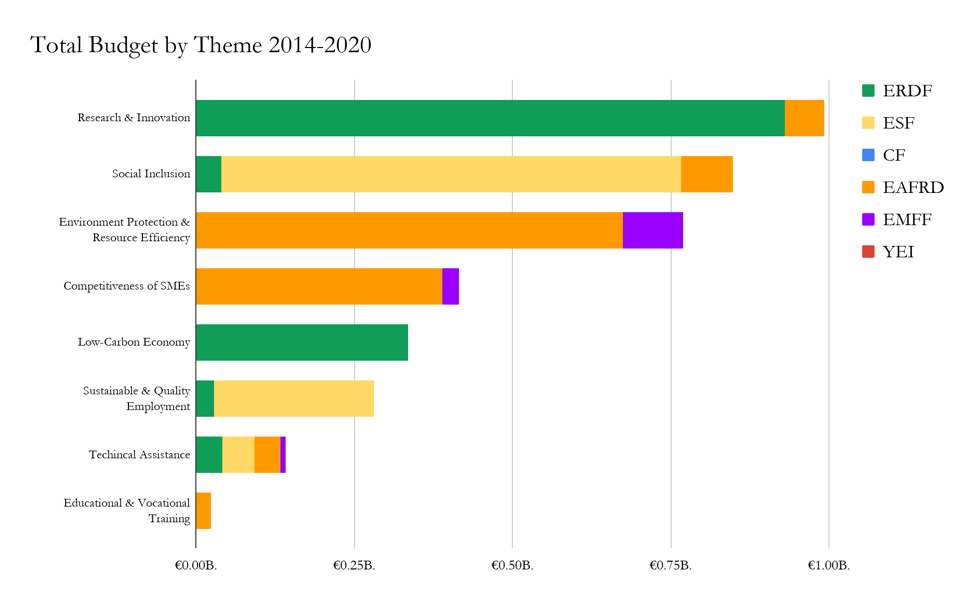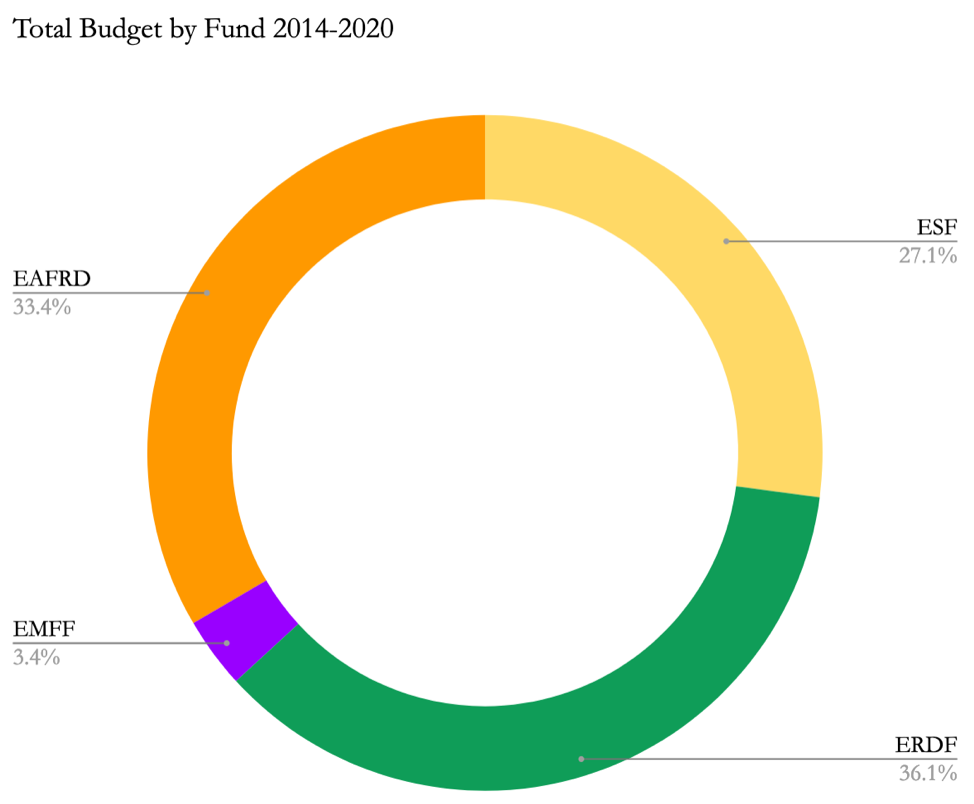News
Country Profile | Netherlands

Through 7 national programmes, the Netherlands has been allocated €1.95 billion from ESI funds for the duration of the 2014-2020 Multiannual Financial Framework; an additional national contribution of €1.85 billion take the Netherlands’ total budget to €3.8 billion.This budget is designed to support the social development of the country, as well as to further strengthen its economic environment, and is to be invested in:
- Strengthening the potential for innovation by financing measures designed to stimulate business investment in research and innovation;
- Promoting active inclusion and create sustainable and high-quality employment;
- Improving the vocational training and educational systems and helping excluded groups return to the labour market;
- Supporting the shift towards a resource-efficient, low-carbon economy through the use of renewable energies and energy efficiency improvements;
- Increasing the competitiveness of agricultural, fisheries and aquaculture SMEs;
- Improving the environmental sustainability of the agricultural sector through measures directed at restoring, preserving and strengthening ecosystems affected by agricultural activities;
- Making fisheries and aquaculture more environmentally-friendly, resource efficient and sustainable;
- Improving marine ecosystems and aquatic biodiversity.
The main investment area of the Dutch government are the strengthening of research and innovation (R&I) across many sectors and fields, for which the European Regional Development Fund (ERDF) and the European Agricultural Fund for Rural Development (EAFRD) have assigned respectively €900 and €60 million. Relevant in the Netherlands political agenda is the promotion of active inclusion, through social cohesion activities and enhancements in the vocational and educational training of groups currently excluded from the job market. For this reason, the ERDF and EAFRD, together with the European Social Fund (ESF) are investing more than €800 million, with the ESF accounting for above €700 million.

Another important investment theme is the improvement of resource efficiency and environmental protection in the country: in fact, the Netherlands are, contrary to popular belief, among the EU countries with the lowest percentage of energy produced by clean energy sources, with only 7.4% of the total energy output. In order to make up for such low efforts, the Dutch government is investing around €750 million to support the shift towards a resource efficient and low-carbon economy. Chart 1 shows that the allocation of ESI Funds for this theme comes from the EAFRD (€670 million) and the European Maritime and Fisheries Fund (€100 million).
As previously stated, the overall total budget for the 2014-2020 financial framework reached €3.8 billion. Chart 2 allows us to observe that the ERDF is the largest ESI Fund contributor, with 33.4% of the total budget, granting the Netherlands more than €1.3 billion to be used in enhancing research and innovation across multiple fields.

The European Agricultural Fund for Rural Development has a 33.4% share in the total budget allocated by the European Structural and Investment Funds, with the clean energy transition as the main focus of expenditure. The European Social Fund contributes to the budget with 27.1%, and is mainly used to strengthen social inclusion and to create sustainable jobs for marginalised people. The European Maritime and Fisheries Fund contributes only 3.4% to the total budget, an endowment of €130 million.
In the matter of absorption rate, with a 34% share of spent funding from the ESIF, the Netherlands has one of the highest percentages in the European Union, being 6% above the European average of 28%. The country is even more efficient when it comes to financial resources already allocated to selected projects: with a remarkable 82%, the Netherlands are 17 percentage points above the European average of 65%. Therefore, out of the total budget of €3.8 billion, the Netherlands has already allocated more than €3 billion, confirming the fact that the country is one of the leading member states in terms of reception of European Structural and Investment Funds.
Country facts:
Name: Netherlands
Capital: Amsterdam
Government: Parliamentary Constitutional Monarchy
Population: 17,308,133
Area: 41,543 km²
GDP per capita: €47,565
Currency: Euro (€)






